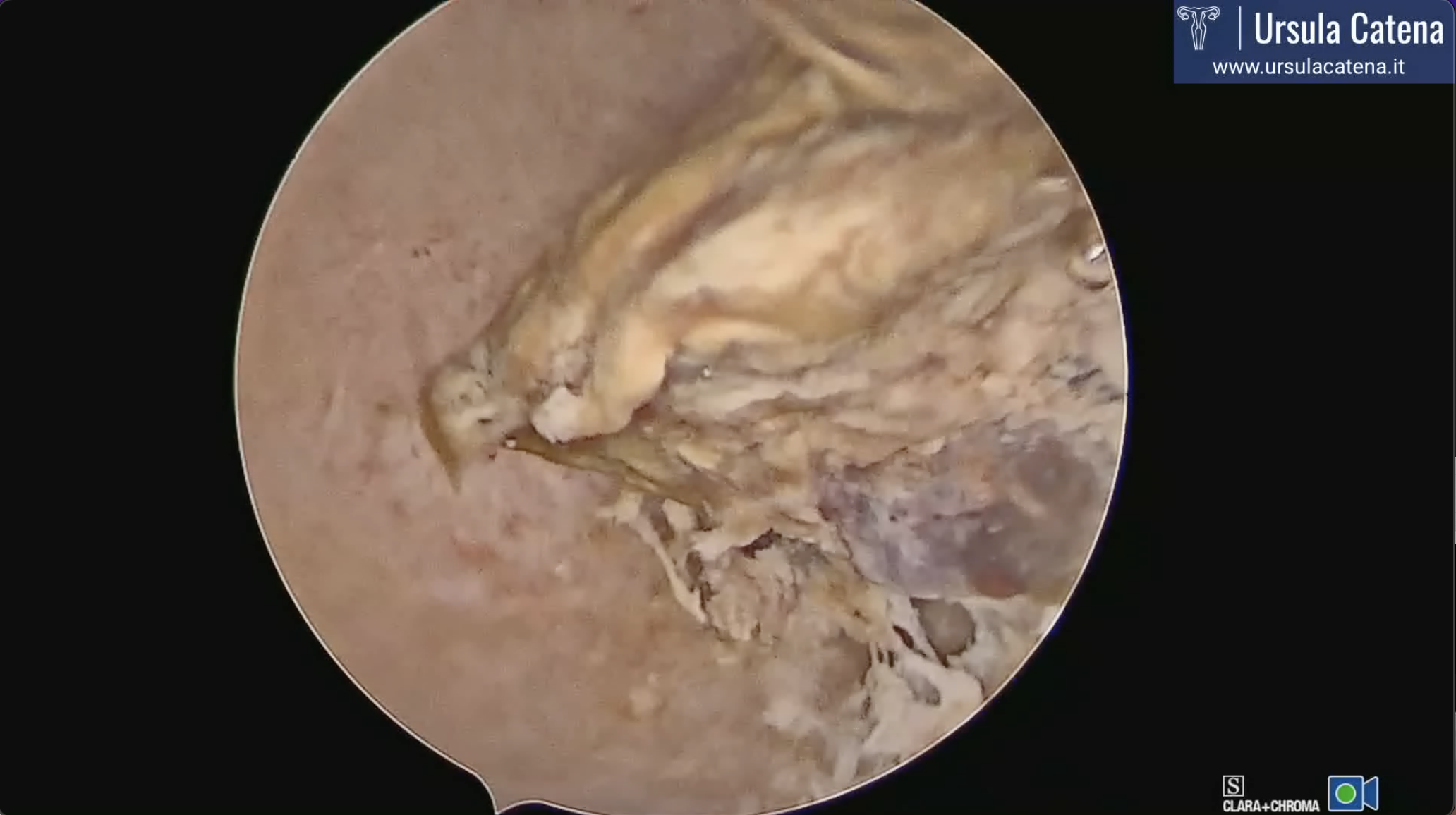Residual products of conception (RPOC) can occur after an early or late abortion, after an early or late pregnancy termination (TOP), or after a vaginal delivery or caesarean section. This event appears to complicate approximately 1% of full-term pregnancies. Traditionally, treatment of RPOC is dilation and curettage (D&C) of the uterine cavity. The risk of intrauterine adhesions after repeated D&C for placental remnants is reported to be about 40% of cases.
At the CLASS Hysteroscopy Center, it is possible to treat placental remnants with innovative techniques. First of all, hysteroscopy allows to directly visualize the uterine cavity and, therefore, to remove the pathology under vision by removing it completely in a safe and effective way. It has been shown that hysteroscopic removal of RPOCs is associated with a lower rate of intrauterine adhesions compared to D&C.
In CLASS Hysteroscopy Center, first of all, patients undergo a pelvic Doppler sonography which allows the evaluation of any abnormal vascularization of the RPOC.
In case of hypervascularized RPOC, patient will first undergo ultraselective embolization of the RPOC feeding vessel, with ultramodern interventional radiology techniques. Today, in fact, in ultra-specialized centers such as our, it is possible to ultraselectively embolize the feeding vessel with absorbable agents, such as Spongostan, which allow to reduce possible intraoperative bleeding but to restore the blood supply after about 48 hours in such a way to preserve patient's future fertility.
The RPOC hysteroscopic resection procedure, if hypervascularized, is performed 24 hours after the embolization procedure. In case of minimally/non-vascularized RPOC, obviously, the hysteroscopic resection is carried out directly, after Doppler sonography which confirms the non/poor vascularization of the lesion.
In recent years, hysteroscopic morcellation, a new mechanical technique already used for the removal of endometrial polyps and submucosal myomas, has been used for RPOCs. This new tool, used in CLASS Hysteroscopy Center, is very safe and effective in terms of reducing the rate of postoperative intrauterine adhesions. At the end of the procedure, haemostasis is checked and in most cases of non/poorly vascularized RPOCs, patient directly go home 3 hours after the procedure, without the need for hospitalization in an inpatient ward. In case of hypervascularized RPOCs, a one night hospital stay is foreseen.
After 30-40 days from primary surgery, an outpatient hysteroscopy should always be performed and patient can try to get pregnant from the next menstrual cycle.
Look our photos





























